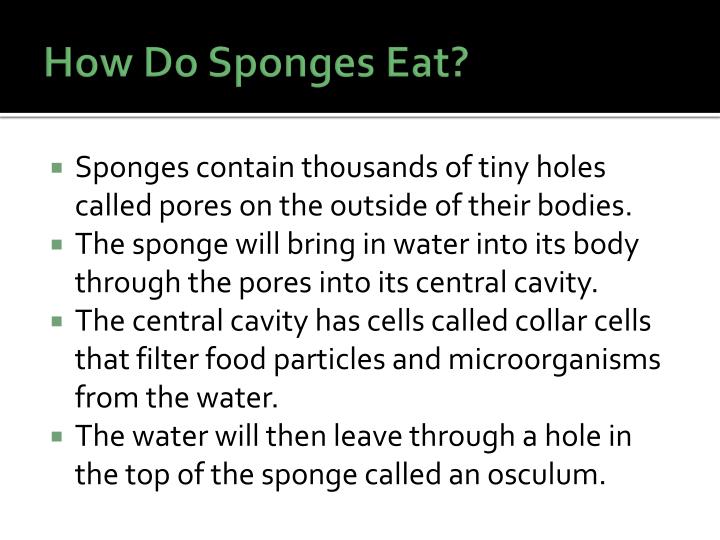

Many, if not most, of these canals are lined with special flagellated cells called ‘choanocytes’. They have been living in the waters of the world for more than 600 million years, and can now be found in all marine and many freshwater habitats. In the Palaeozoic, they are believed to have comprised more than half the biomass in marine reefs. Porifera are an ancient and highly successful group of animals. Such a brief description though does not do them justice. Then, if given time, the individual cells will come together again and make a new sponge.Ī sponge is a simple organism that is easy to describe:Ī sponge is a sedentary, filter-feeding metazoan which has a single layer of flagellated cells that drive a unidirectional current of water through its body.
.gif)
Some species, such as the freshwater sponge Ephydatia fluviatilis, can be pushed through a sieve. Because the cells are not linked in a tissue, it is possible for them to be separated and then come together again. One of the more amazing things about sponges is their ability to suffer damage.

Due to their usefulness in the bath, many people who care nothing for invertebrates at least know their name and may even have seen a sponge’s skeleton on sale in a shop. Porifera (Sponges) is one of the better-known groups of invertebrates. Lives in aquatic environments, mostly marine.Has a distinct larval stage which is planktonic.Reproduce sexually or asexually, sexual reproduction can be either gonochoristic or hermaphroditic.All are sessile (live attached to something as an adult).Cells and tissues surround a water-filled space but there is no true body cavity.Body multicellular, few tissues, no organs.


 0 kommentar(er)
0 kommentar(er)
